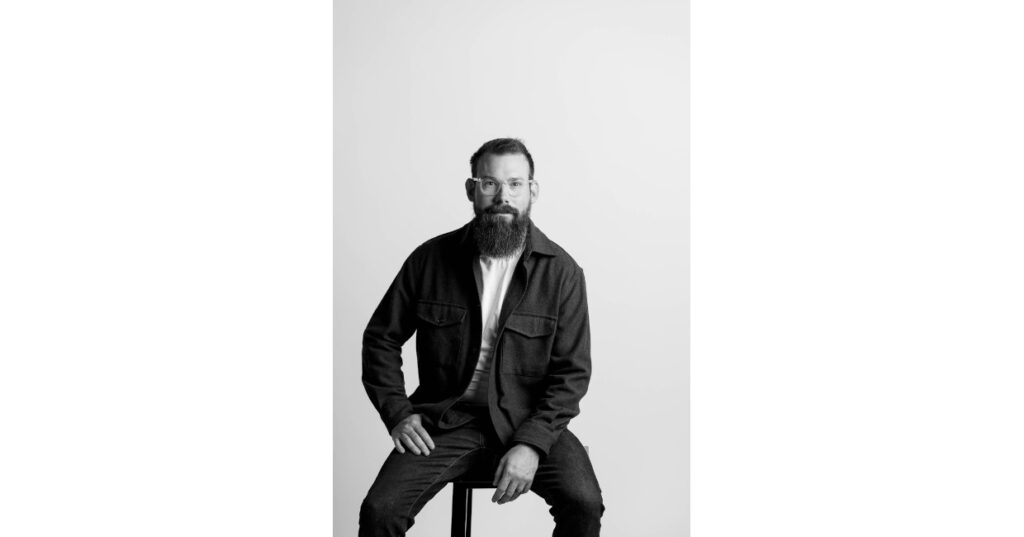Casey Scalf, Director of The Society, told Hospitality Interiors about the latest trends and themes in wellness design and why designers should ensure the concept is never just an add-on.
A specialist in boutique and independent hotel design, Casey Scalf has built a career spanning 22 years and has a passion for creating narrative-driven stories through his designs. In 2023, he took on the role of Director at independent design collective, The Society, where his creativity and strategic thinking have allowed him to continue his interior design journey.
Casey’s depth of experience from a range of avenues has provided insightful learning experiences and he has been able to apply his skills to projects of different sizes. “I’ve designed and developed hotel stories for all the major brands like Marriott, IHG, Hilton, and Hyatt, whether it be Hilton’s Tapestry Collection or Marriott’s Tribute Portfolio,” he said. “I’ve done work for most of the soft brands and select service brands that still have a unique story to tell. We’ve done a lot for Moxy, which has been a great relationship – they’re always fun to work with – and then of course our staple of independent hotel owners who are doing independent boutique properties. It’s a little bit of all the different worlds.”
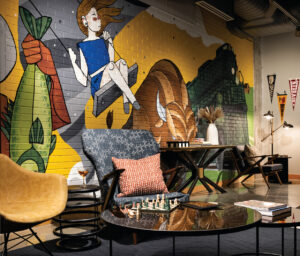
Image: Jim Kruger
With this breadth of experience in mind, I was keen to pick his brain about wellness design and ask him about the trends and themes he is seeing come through the industry at the moment. He said that ensuring wellness is fully considered in luxury hospitality design has never been more important. “Wellness has definitely become more of a focus,” he explained. “I think that since the pandemic, people are taking much better care of themselves, and are much more aware of health in general, which converts into amenities and offerings at hotels that can meet the needs of those people as they’re travelling.”
This can be realised in a variety of ways – including through spas and gyms, in-room offerings, and F&B outlets. He continued: “An increased emphasis on health and wellness might show up as a wider offering of healthy options in the hotel marketplace or coffee shop grab-and-go. I’ve noticed that people make conscious selections when they travel. This has impacted what food and beverage offerings are available within the hotel.”
“I’m also seeing more guest room experiences where brands offer in-room fitness offerings like the ability to have exercise equipment brought up to a room, or having yoga mats and other fitness equipment just be a part of the guest room design. On top of this has been a focus on sleep wellness and improving the quality of sleep that guests have during a stay.”
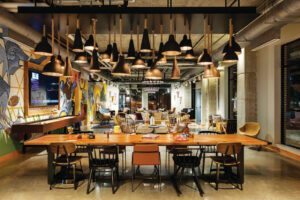
Image: Jim Kruger
With this in mind, and with competition between properties growing within the luxury market, what are the pitfalls that designers should avoid when considering wellness spaces? Casey has a clear vision for what needs to be included, and top of his list is access to natural light. “I think historically, wellness rooms have been an afterthought, added to whatever space is left during the design phases,” he said. “This often ends up being a basement or some other space that lacks windows or has poor natural lighting. I think that access to the outdoors, and indoor-outdoor relationships aren’t often leveraged or maximised to the level that they could be.
“For instance, I was recently looking at a plan for a potential project that has an outdoor pool in a warm climate. It has rooms adjacent to the pool, but those rooms don’t have any access to the outdoors. Having the ability to provide fresh air and sunlight, as well as access to wellness activities at the pool, directly from a guest room, and then not including it was a missed opportunity. We try to find those opportunities in other projects with similar circumstances; we had a project with standard rooms on the ground without access to the pool deck or anything, so we brought value to the table by pointing out that there were only three of those ground-floor pool-adjacent rooms – let’s convert them to cabana room suites with direct private access to the pool deck and leverage them as special revenue generators. It’s about finding opportunities not only to provide a unique experience but to also link those experiences to wellness activities, whether it’s swimming or another outdoor fitness area.”
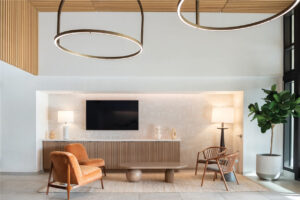
Image: Hawaii Media Collective
When considering the design of wellness spaces, Casey told me that guests looking for these amenities are often also likely to consider the sustainability credentials of a hotel and the importance of linking these two design concepts should not be overlooked. This is something Casey and his team have focused on with their latest project in Lake Tahoe, which they were asked to design with sustainability in mind. “What we found in our research is that those two subjects are often paired demographically and psychographically,” he said. “The person who appreciates sustainability efforts often will also appreciate wellness considerations. The psychographic is usually the same individual. There are exceptions, but the people who are taking care of planet Earth are also taking care of themselves. [With this project] we’ve certainly integrated wellness aspects into it because we understand that guests coming to that hotel with a sustainable mission will expect that their wellness will also be taken care of. We do that through amenity offerings: it’s not just a run-of-the-mill fitness room. The food and beverage offerings will also be very much oriented towards healthy and clean living, with locally sourced and harvested foods being a staple of all menus.”
And just like Casey’s approach to wellness design, sustainable design is never just a token approach: “It really touches every single phase and aspect of the design process, whether it’s programming and adjacencies or systems like HVAC and lighting. Even material selections and sourcing have opportunities to be sustainable, making sure that the products are either recycled or have recyclability. It’s the same with manufacturers – we want to make sure that the people who are making our furniture are also practising sustainability at every level of their factories and in every decision they make along the way. There are a million places and decisions to make, so you need to decide what’s important and what isn’t.”
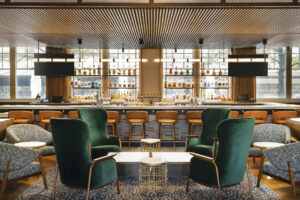
Image: Mark Compton
This consideration has to extend past design and into operations as well. “Throughout the design process, you need to think about how everything fits together,” he said. “With the Lake Tahoe project, for instance, we’re thinking way past the opening of the project – we’re thinking about how the project is sustainable in the long run and how it gives back to the community. A lot of that relates to programming. When we made the lobby, we made it so that we could host educational opportunities for guests at the hotel or the general public, way in the future, like sustainability seminars. Outside, we made an intentional area that’s not only for wedding receptions or corporate events but grants the ability to pull in a farmer’s market on weekends, or something else that integrates the site with the surrounding local community. You have to be thinking a little bit of the horse before the cart when deciding what to do.”
I asked Casey what he looks to for inspiration for his designs, and does this differ when designing with a wellness concept in mind? “Generally, history is an easy idea to dig into – the past events of what’s happened in a location, juxtaposed with what the culture is now. We look at what was going on 50, even 100 years ago, and then if there is a clear picture of where the neighbourhood or city is headed, what their future looks like. Are they looking to attract more industries or people of a specific demographic? If so, there is certainly inspiration to be found in that.”
“Of course, any location has its own context for design inspiration aside from just history. Geographic landmarks, regional aesthetics, and the cultural traditions that go along with them also inform the design direction for many of The Society’s projects.
“Regarding wellness, I think location can still play into that. For instance, with the Maui Coast Hotel we recently did, the location allows us to provide more outdoor activities. These would be the same things you get in Palm Springs or other similar destinations – bikes to borrow, swim classes in the pool, and things like that where you can really spread out outside of the building.”
So it’s location, location, location that is key when designing for luxury, even when you have wellness in mind.
www.welcometothesociety.com


